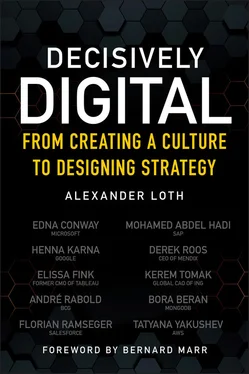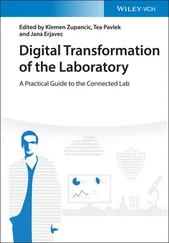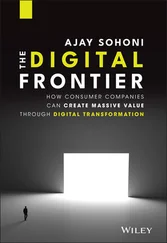I went to a regional newspaper in Germany to give a software training. They had neither laptops nor guest WiFi. Instead, we had to use a training room in the basement that reminded me of the computer lab in my high school 30 years earlier. On the other hand, when I visited the data journalism team of the newspaper Die Zeit , I felt like I was on the Google campus. They had top-notch equipment, and they were hosting data science meetups in a room complete with beanbags and a beer-filled fridge. They are producing cutting-edge data journalism.
No matter what the starting point is, we are now seeing a wider adoption of digital technologies, because these technologies are becoming commoditized, meaning they become more accessible and easier to implement.
Especially here in Europe, concerns about data privacy have held us back in many regards. Perhaps we have good reasons to be skeptical; we Germans are all too aware how authoritarian regimes can use information about their citizens for total surveillance. Nonetheless, public acceptance of technology that relies on private data is slowly increasing. I am actually amazed that Germany put out a coronavirus warning app that lets you know when you were in the vicinity of someone who later tested positive for COVID-19.
Alexander: So where do you see this going in the future? In what fields do you see the biggest changes?
Florian:All sectors and industries will be affected, because most business processes involve moving information around.
The most obvious ones are sectors such as banking that already have gone through the first stage of the transformation — bank account records are already nothing but 0s and 1s. With the advent of so-called robo-advisor apps and other fintech innovations, we now see second- and third-stage technologies being used to democratize investment products that in the past were accessible only to the rich, who could afford their own private wealth managers.
But healthcare is where I see the biggest potential for society, both in medical research and in clinical practice.
Diagnosing a patient is, after all, just a pattern recognition task: a doctor considers your symptoms, lab results, MRI images, and so on, and compares them to what illnesses they have learned about and encountered in their careers so far. But medical professionals, like all humans, are affected by different behavioral biases, such as recency bias, which can lead to unfortunate cases of misdiagnosis. Further, consider the fact that, in the EU alone, 30 million people are estimated to suffer from one of more than 6,000 different rare diseases — and those are just the ones that we know about. No doctor could possibly learn about all these diseases in medical school.
So, one could imagine that computers might be able to assist doctors in diagnosing patients by comparing their health records to the different patterns of diseases in a database. Already today, there are studies showing that computers can be better than humans at spotting potential tumors in mammograms.
With machine learning, researchers are currently studying how innovative types of medical data, including, for example, the gut biome composition, relate to different illnesses, meaning that we will have more noninvasive tests that can catch diseases early, before they cause any symptoms.
Also, in a future where anonymized digital patient records of whole populations are available to scientists, they will be able to slice and dice the data in many ways to find more relevant insights for different subgroups of the population. Because they are typically limited in size, traditional clinical trials often gloss over differences between different age groups, ethnic groups, or groups of people with different comorbidities.
There is the potential for different digitally facilitated services to help us reduce congestion in cities. In the US, Uber offers a service called Uber Pool. Their algorithms find efficient routes for several passengers to share a ride, instead of each taking a separate car. That's brilliant. We need more approaches to society's problems like this!
Alexander: So, there are many developments on the horizon that will make our lives better!
Florian:Yes, but the digital transformation also comes with its problems. Any new technology can be used for both good and bad. For example, authoritarian governments can use facial recognition technology to implement Orwellian surveillance in public spaces.
Even in more democratic societies, the Cambridge Analytica scandal opened our eyes to how our personal data can be abused for political manipulation. Machine learning algorithms have been shown to pick up racist or otherwise discriminatory patterns from the training data that their makers feed them.
Cloud and Big Data technologies require big servers to run on, which use large amounts of energy. If not sourced from renewable sources, these contribute to air pollution and global warming. You might have seen the line “Consider the environment before printing this email,” but maybe we should also add a warning about the environmental effects of reading your mail online!
As an economist, I am also deeply concerned about the gig economy and the potential for it to create a precariat of unseen scale. Jobs with platforms like Uber, Deliveroo, and Amazon deliveries can be stepping stones for people who are able to use that income to invest in their future, but these same jobs can also create dependencies that expose workers to the pricing algorithms of these companies and leave them without any safety nets. This is why our politicians need to build the right social and economic fabric for these technologies to become a force for good for society as a whole.
Alexander: You already alluded to the changing world of newspapers and other media organizations. Given that you have had a number of clients from that sector, how do you see the digital transformation play out in that sector?
Florian:Newsrooms have been hit by several disruptions simultaneously, and I fear for quality journalism, which is in rapid decline, perhaps with the exception of the top-tier newsrooms. That is a real threat to our democratic societies, for which the so-called Fourth Estate is absolutely vital, with investigative journalism helping to hold our elected leaders accountable.
The first disruption was the loss of revenue from classified ads that followed the rise of dedicated websites such as eBay, Craigslist, Gumtree, and others (stage-one replacements of an analog product). Local newspapers were particularly hard hit by this.
Second, big tech and social media companies have become the de facto newsstands of our times, because they distribute individual news articles either directly, as in the case of Apple News or Google News, or by controlling what gets shared on their platforms, in the case of Twitter and Facebook (stage-two technologies). The result was that subscriptions and newsstand sales plummeted.
Even more worrying, industry insiders have told me that the tech giants can tell newspapers exactly what type of content and in what form they want to distribute, not to mention the power of the social media distribution algorithms that decide who gets to see what. In a way, then, they are becoming the de facto editors too.
Third, the only revenue stream left to news organizations was online ads. Yet again, big tech companies are driving this business model. Google Ads is deeply embedded in most news websites because they have all the information from tracking people across the web to serve the reader “relevant” ads — including ads for toasters, weeks after you just bought a new toaster (a stage-three technology).
Читать дальше












